Manual Lymph Drainage (MLD)
MLD, a gentle manual technique, is a potent way to activate the lymphatic system, especially when the transport capacity of the lymph vessel is reduced because of prior surgery and/or radiation therapy. However, if carried out as an isolated treatment for lymphedema, the results will be very temporary and lasting evacuation of lymph fluid from a congested limb is not possible. Complete Decongestive Therapy (CDT)
CDT is a combination of MLD, bandaging of the affected areas, remedial exercises and skin and nail care. CDT is divided into a two-phase program that first involves a intensive treatment phase, followed by a maintenance program that the patient continues at home. Carried out with great care, consistency and the expertise of a well-trained therapist, it is the treatment of choice for chronic extremity lymphedema. Even in advanced lymphedema, CDT can be used (free of side effects) with great success. Because CDT is labor intensive, time consuming and requires patient compliance, many patients have difficulty committing to the program at first. Nevertheless, because the results of CDT are always superior to all other treatments, more and more patients undergo CDT treatment and are then able to maintain the reduction of their limbs by diligently participating in a home maintenance program. Since CDT is fairly new in the United States, staff training and treatment standards vary a great deal from clinic to clinic. It is important that the CDT training that a lymphedema therapist received consists of all components of CDT (basic and advanced MLD, lymphedema bandaging, remedial exercises, skin and nail care). The therapist must also have a complete understanding of the anatomy, physiology and pathophysiology of the lymphatic system, the treatment of primary and secondary lymphedema, the indications and contraindications of MLD/CDT, as well as the measuring techniques for lymphedema support garments. Further, lymphedema therapy should not begin unless the patient has been examined and diagnosed by a board-certified physician who understands lymphedema and its complications. Once the diagnosis of lymphedema has been confirmed and treatment has begun, the progress must be monitored by the physician. Whereas the clinical diagnosis of lymphedema can most often be established without invasive testing, and electrocardiogram before the treatments begin and during the course of treatment is sometimes necessary to ensure safe treatment for each patient. Lymphangioscintigraphy (LAS), CT scans, MRIs are recommended to some lymphedema patients before they start CDT. The physician will be able to decide and inform the patient about the necessity of such procedures at the time of consultation. Because of the complications associated with lymphedema, the involvement and supervision of a qualified physician is essential in order to provide safe and effective lymphedema therapy.
| BEFORE |
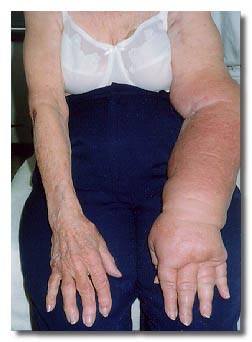
|
| Courtesy Academy of Lymphatic Studies |
| AFTER |
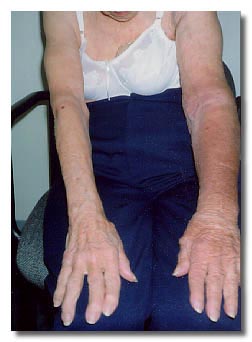
|
| Courtesy Academy of Lymphatic Studies |
|
 |
 |
|  |
|
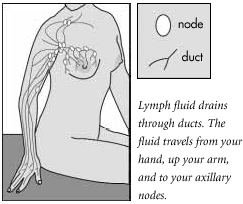
What is lymphedema?
Lymphedema [lim-fa-DEE-ma] is a build-up of lymphatic fluid, which causes swelling in the arm and hand, and occasionally in the chest/breast/back on the side of surgery. When the lymphatic system is damaged, fluid collects in the tissue of the affected area causing swelling. The surgical removal of the lymph nodes in the underarm area and/or radiation therapy to the affected area can interfere with normal lymph drainage. The lymph system consists of ducts (vessels), nodes and tissue. Its role is to remove impurities from the bodys tissue and to produce cells that are vital in fighting infections. Ducts transport colorless fluid (lymph) that passes through the nodes, where fluid is filtered.

|
| Compression Bandaging |
Send us an email
| BEFORE |
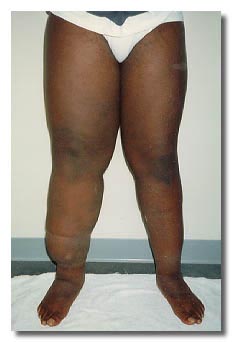
|
| Courtesy Academy of Lymphatic Studies |
| AFTER |
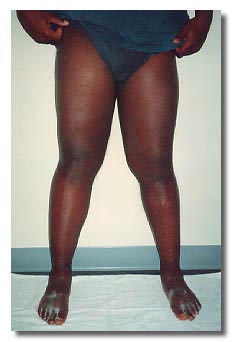
|
| Courtesy Academy of Lymphatic Studies |
|
|
|
|



